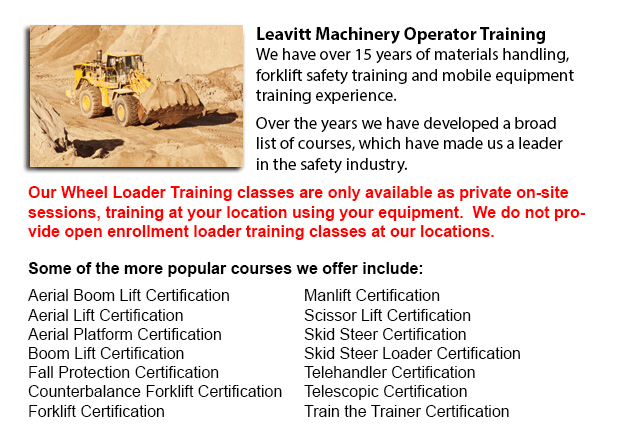
Lift trucks are available in different load capacities and several models. Most forklifts in a typical warehouse surroundings have load capacities between one to five tons. Larger scale models are used for heavier loads, like loading shipping containers, can have up to fifty tons lift capacity.
The operator could make use of a control in order to raise and lower the forks, which can likewise be known as "tines or blades". The operator of the forklift can tilt the mast to be able to compensate for a heavy loads propensity to angle the tines downward. Tilt provides an ability to function on uneven ground too. There are yearly competitions meant for experienced lift truck operators to contend in timed challenges as well as obstacle courses at regional lift truck rodeo events.
General utilization
Lift trucks are safety rated for cargo at a specific utmost weight and a specific forward center of gravity. This vital information is provided by the manufacturer and situated on a nameplate. It is important loads do not go beyond these details. It is illegal in many jurisdictions to tamper with or take out the nameplate without obtaining consent from the lift truck maker.
The majority of lift trucks have rear-wheel steering in order to improve maneuverability. This is specifically effective within confined areas and tight cornering areas. This type of steering differs fairly a little from a driver's initial experience with other vehicles. Because there is no caster action while steering, it is no essential to use steering force to be able to maintain a continuous rate of turn.
One more unique characteristic common with lift truck utilization is instability. A continuous change in center of gravity occurs between the load and the lift truck and they need to be considered a unit during operation. A lift truck with a raised load has centrifugal and gravitational forces that can converge to lead to a disastrous tipping mishap. In order to avoid this from happening, a lift truck must never negotiate a turn at speed with its load elevated.
Forklifts are carefully designed with a load limit utilized for the tines. This limit is lessened with undercutting of the load, that means the load does not butt against the fork "L," and likewise lessens with blade elevation. Generally, a loading plate to consult for loading reference is positioned on the forklift. It is dangerous to use a forklift as a personnel hoist without first fitting it with specific safety devices like for instance a "cherry picker" or "cage."
Lift truck utilize in distribution centers and warehouses
Essential for whichever warehouse or distribution center, the lift truck needs to have a safe environment in which to accommodate their safe and efficient movement. With Drive-In/Drive-Thru Racking, a forklift has to go within a storage bay which is many pallet positions deep to set down or take a pallet. Operators are normally guided into the bay through rails on the floor and the pallet is placed on cantilevered arms or rails. These tight manoeuvres require skillful operators to be able to complete the task efficiently and safely. For the reason that each pallet requires the truck to go into the storage structure, damage done here is more frequent than with various kinds of storage. When designing a drive-in system, considering the measurements of the blade truck, including overall width and mast width, have to be well thought out in order to guarantee all aspects of a safe and effective storage facility.
-
Forklift Training Classes Regina
Forklift Training Classes Regina - Forklifts are a kind of heavy lifting equipment used in order to move and handle material efficiently and safely. Sometimes called Lift Trucks, they are made use of in different industries. Employees working with an... More -
Crane Certification Regina
Crane Certification Regina - The Crane Certification Program covers the industry suggested content which would teach the safe and efficient operation of cranes. The person will train in the following: pre-operational, operational and post operating r... More -
Telehandler Training Courses Regina
Telehandler Training Courses Regina - Employers are responsible for making sure that their operating personnel and supervisors are trained to work proficiently utilizing telehandler machines. The competence level of employees need to be assessed. If... More -
Operator Safety Training, Re-Qualification Training, In-House Instructor Training in Regina
Lift trucks are utilized in just about all industrial construction sites and in warehouse operations and in boat yards. The reach feature of a lift truck is a very important component utilized in a variety of applications like for instance when a she... More -
Heavy Equipment Operator Training Regina
Heavy Equipment Operator Training Regina - Training facilities that offer good standards in the business and not only provide field performing tasks but additional equipment training are highly sought after. Accredited schools offer students the know... More -
Wheel Loader Operator Training Regina
Wheel Loader Operator Training Regina - Cranes are industrial machines which make use of pulleys or levers so as to lift considerable loads. The Roman people utilized cranes in order to put up big monuments, that means these machines have been existi... More -
Crane Safety Training Regina
Crane Safety Training Regina - Both crane driver as well as their supervisors need to know all the possible problems connected to the operation of an overhead crane. All over North America, there is legislation that provides regulation for the safe o... More -
Scissor Lift Safety Training Regina
Scissor Lift Safety Training Regina - A Scissor Lift is a functional kind of platform that normally moves in a vertical direction. The machinery is capable of this movement due to the use of folding supports that are linked in a criss-cross pattern c... More

Forklift Training Regina
TOLL FREE: 1-888-254-6157
Regina, Saskatchewan
forklifttrainingregina.com
Email Us
About Us



